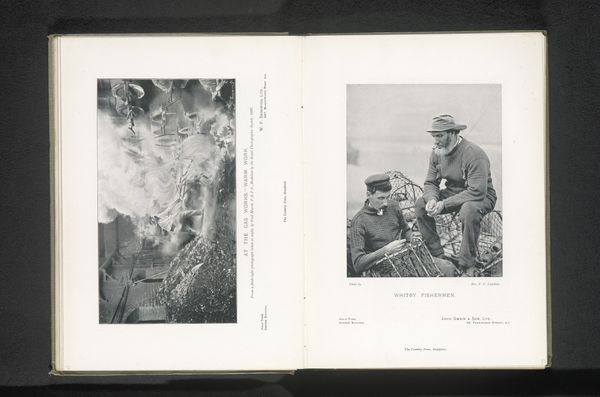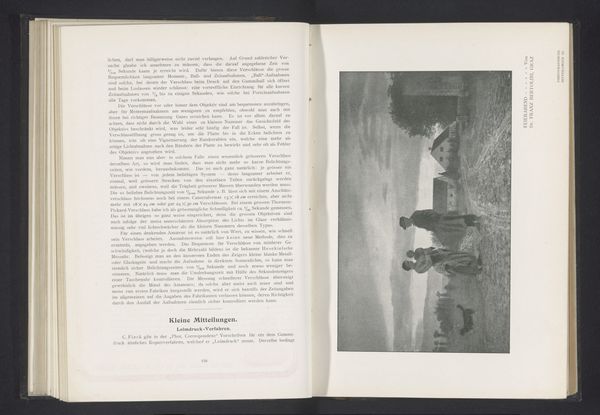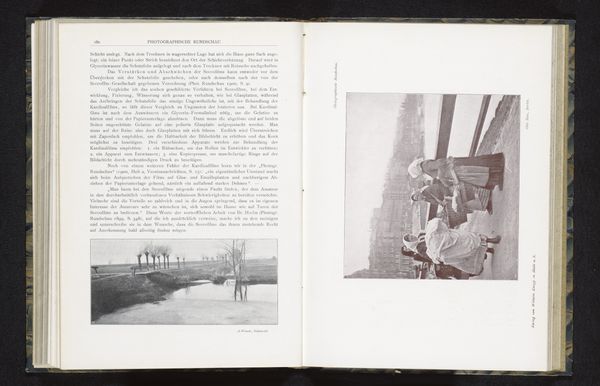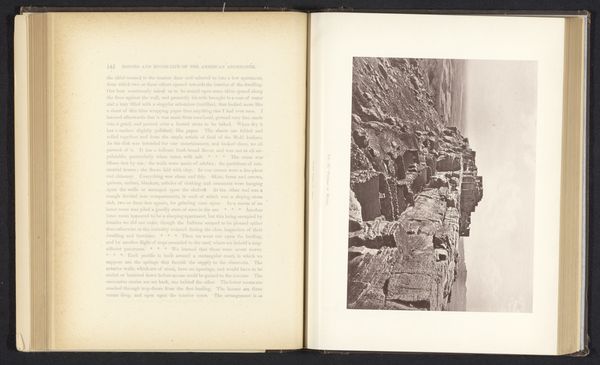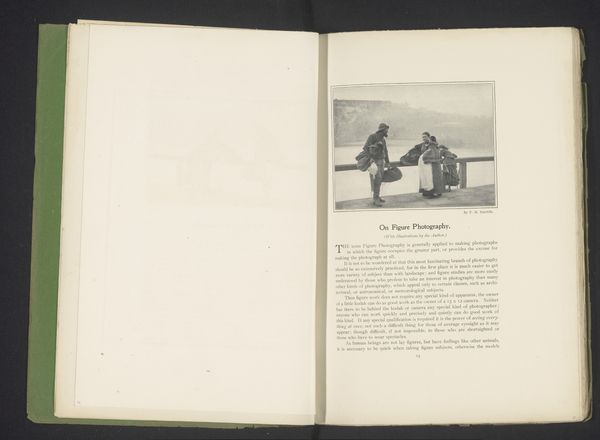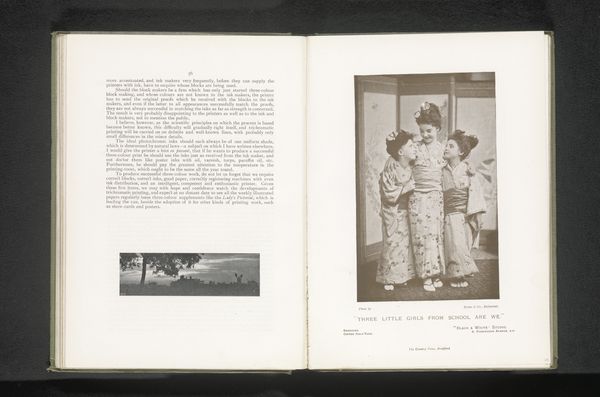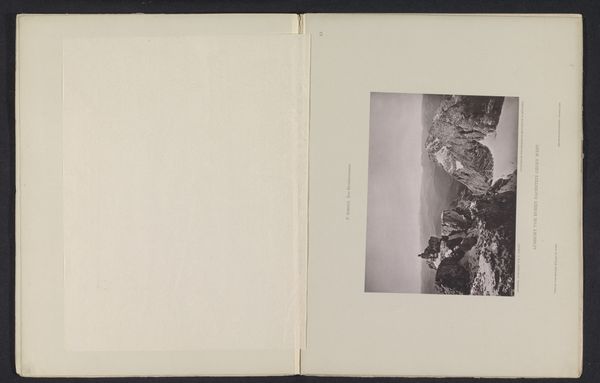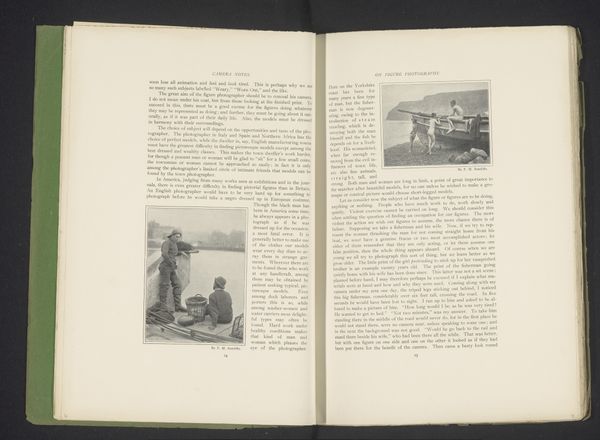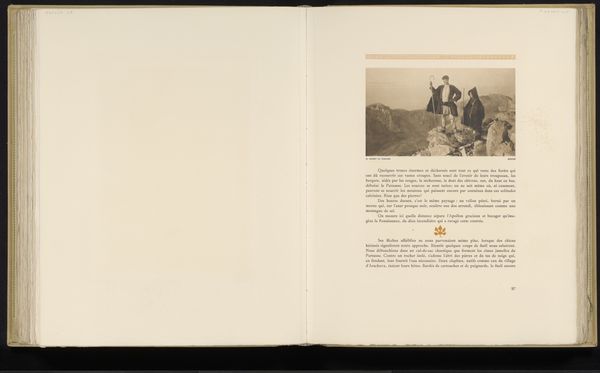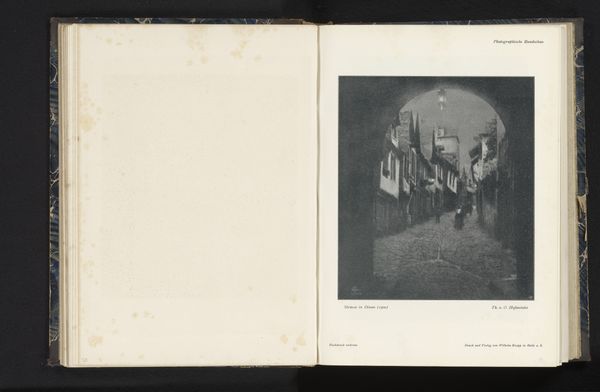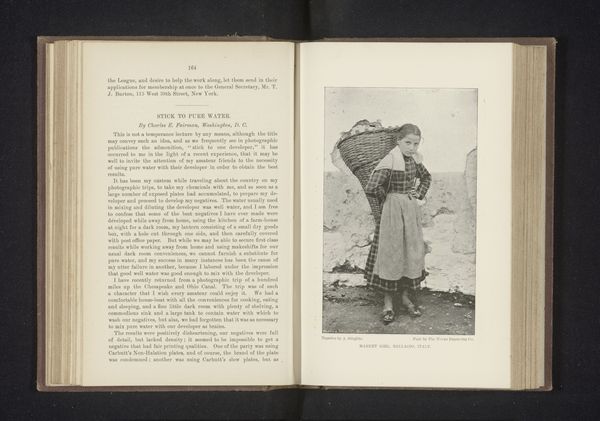
print, photography, gelatin-silver-print, albumen-print
portrait
pictorialism
landscape
photography
gelatin-silver-print
genre-painting
albumen-print
Dimensions: height 159 mm, width 127 mm
Copyright: Rijks Museum: Open Domain
Curator: F.C. Lambert created "Twee Vissers," or "Two Fishermen," sometime before 1899. It's a photograph, an albumen print that showcases the figures against a stark backdrop. The mood is instantly somber to me. What's your first reaction? Editor: There's a stillness to it, yes. An understated anticipation hanging in the air. My eyes are drawn to the weathered textures: the roughspun clothing of the fishermen, the age-worn door, even the rope details of their craft. They are visual elements imbued with symbolic weight. It whispers of a life entwined with the sea's rhythms, and struggles, doesn't it? Curator: Absolutely. Consider how their profession defines their identity, circumscribes their existence through labor, risk, and community bonds. This photographic approach to genre painting captures a crucial juncture in history when technological innovation meets societal narrative. This allows for social structures that have perpetuated inequality for women and minorities, especially in lower classes such as fisherman and farmers, to rise and make way for critical reform. Editor: Visually, there’s almost an archetypal quality in their attire. The hats, the sturdy boots, the way the light catches the salt spray... It's become a familiar, almost ubiquitous symbol. But looking at the expressions on the faces is perhaps a study into more somber elements... They are facing an almost-guaranteed death everyday they do their jobs. How can they face each new sunrise and adventure? Curator: The genre style is evident in its staged feel, carefully crafted to evoke the picturesque. But there's more to this than sentimentality. Lambert is also highlighting the socioeconomic realities and conditions within specific class categories. We see how photography allowed more accessible narratives about daily routines of working people and common class groups. Editor: It certainly prompts me to think about cycles: tides, seasons, the circular shape of that coiled rope, suggestive of their fate's inescapable pull. Fishing becomes more than just a job; it's a symbol, a coded visual expression with cultural meaning. Curator: Thinking about Lambert's positionality within his social and historical environment also raises vital questions about authorial perspective. Can outsiders ever genuinely represent marginalized voices without adding or promoting elements of appropriation? Editor: That question is especially palpable today. Considering the past from our present, we are bound to unearth not just art, but societal strata. This humble photograph becomes more provocative because it provides a look into our symbolic visual culture from the time period and asks critical, ever relevant, questions. Curator: Indeed. It becomes a lens through which we view intersecting histories—of art, class, technology, and of social consciousness. Editor: A layered symbol, indeed, prompting us to think, feel, and remember.
Comments
No comments
Be the first to comment and join the conversation on the ultimate creative platform.
